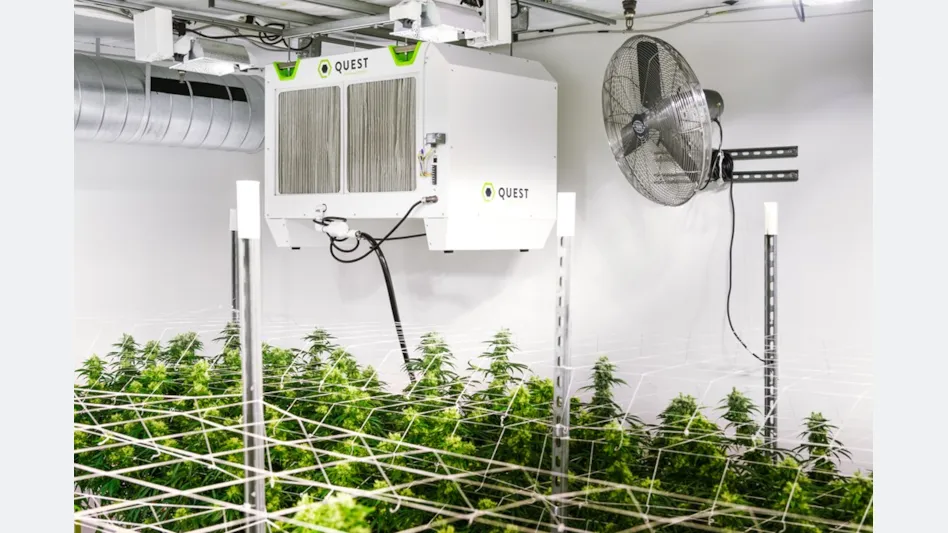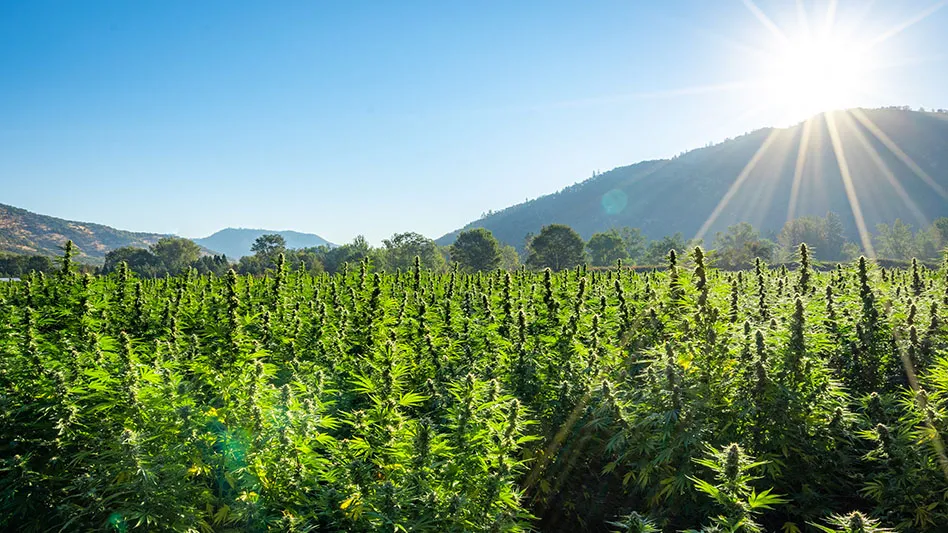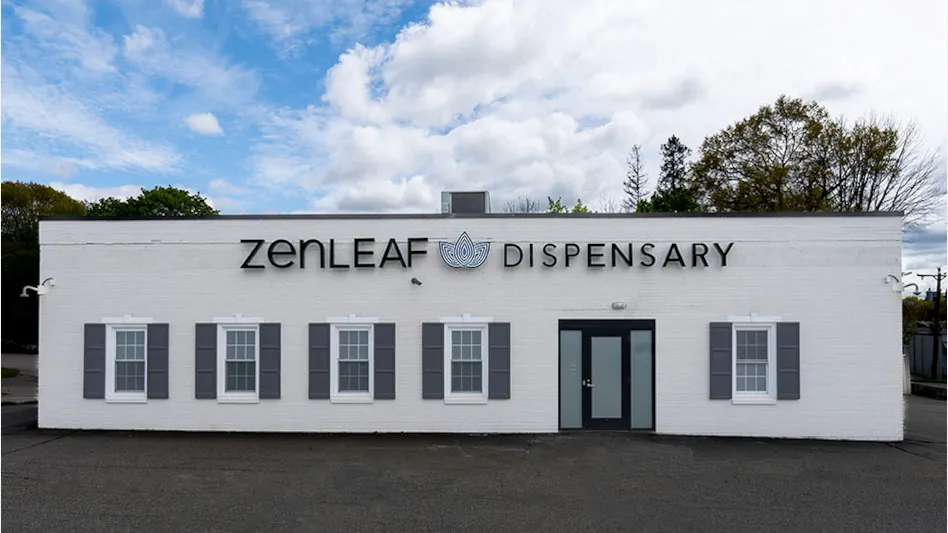
Determining your dehumidification needs as a cultivator can be one of the toughest tasks you must accomplish (ideally) before plants are placed in the grow rooms. There are so many variables to consider: the number of plants you plan to have in a room, the amount of water you are giving your crop, your growing method, and the size of the room must all be factored into your calculation, says John Pratt, a representative from Quest Dehumidifiers. Add to that determining available voltage, power allotment, and the physical space available for the equipment and what seemed like a simple dehumidifier purchase has turned into a jumble of data points and calculations.
Improper humidity levels can be hard to diagnose and costly to fix if you have the misfortune of losing a crop. Telltale signs of humidity issues growers are familiar with are powdery mildew and bud rot, but Pratt says a simple drop in production can also be a warning sign as “decreased yields are also an indicator of poor plant health.” He adds cultivators can know they are on the right path when yields are high and consistent. “Growers who have mastered their environment tend to have bigger, healthier plants,” he says.
To help growers with their dehumidification calculations, Quest offers a sizing calculator on its website, which will “assess the amount of dehumidification needed and then recommends the best size dehumidifier and the quantity needed,” Pratt explains. The calculator takes into account your daily water feedings, your energy cost per kilowatt hour and how many weeks per year cultivators grow. For example, in a room that receives 50 gallons of water per day, 52 weeks per year at an energy rate of $0.20/kWh, the calculator recommends cultivators use three Quest Dual 155 units, and compares the Quest units with other competitor products in the market.
There are other ways for cultivators to determine their dehumidification needs, including through the use of hygrometers and data loggers to measure humidity levels over a set period of time. However, if cultivators use a vertical farming system, “there is going to be a much higher need for dehumidification,” Pratt says. “Also, if the rows are very long, you might need to spread out your dehumidifiers along the row to get even dispersion.”
Seeing as how no two cultivation businesses are set up exactly the same, Pratt says the best way for cultivators to get an accurate reading of their humidification needs “is for our experts to visit growers and help them on an individual basis.”
Photo at top: A Quest 506 dehumidification unit. While most rooms will only require one dehumidifier, cultivators using vertical farming systems should account for increased humidity.
Latest from Cannabis Business Times
- South Dakota Group Submits 29K Signatures for 2024 Adult-Use Cannabis Legalization Measure
- Rescheduling Would Have Saved Verano $80M in 2023 Tax Payments, CEO Says
- Aurora Marks 1st Medical Cannabis Shipment to New Zealand Market
- Where All 100 US Senators Stand on SAFER Banking Act
- Blumenauer Unveils Legislative Blueprint, Additional Administrative Action Needed Following Rescheduling
- Cannabis Rescheduling FAQ: What Now?
- From Custodian to Cultivation Supervisor
- California City in Cannabis Retail Desert Welcomes 1st Dispensary





